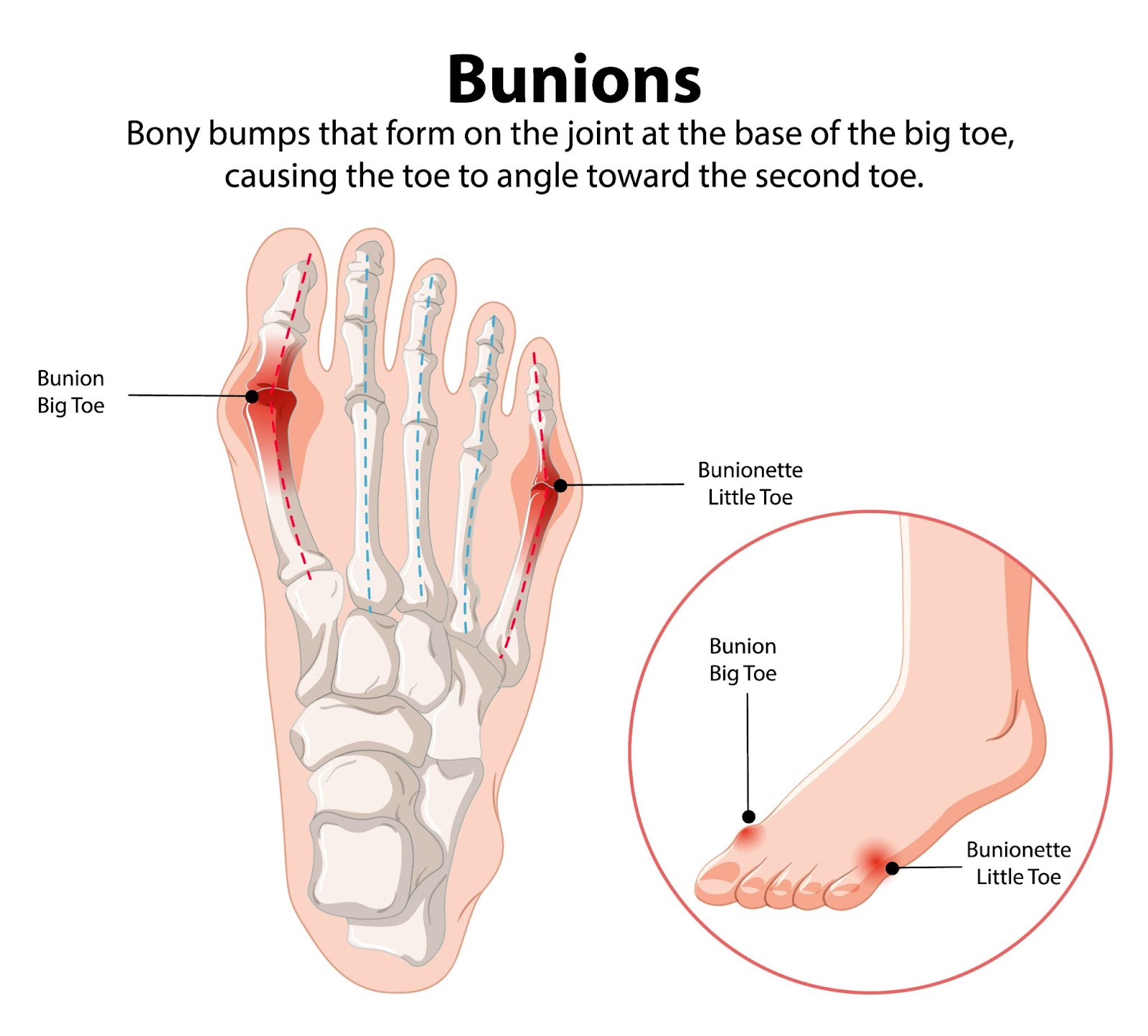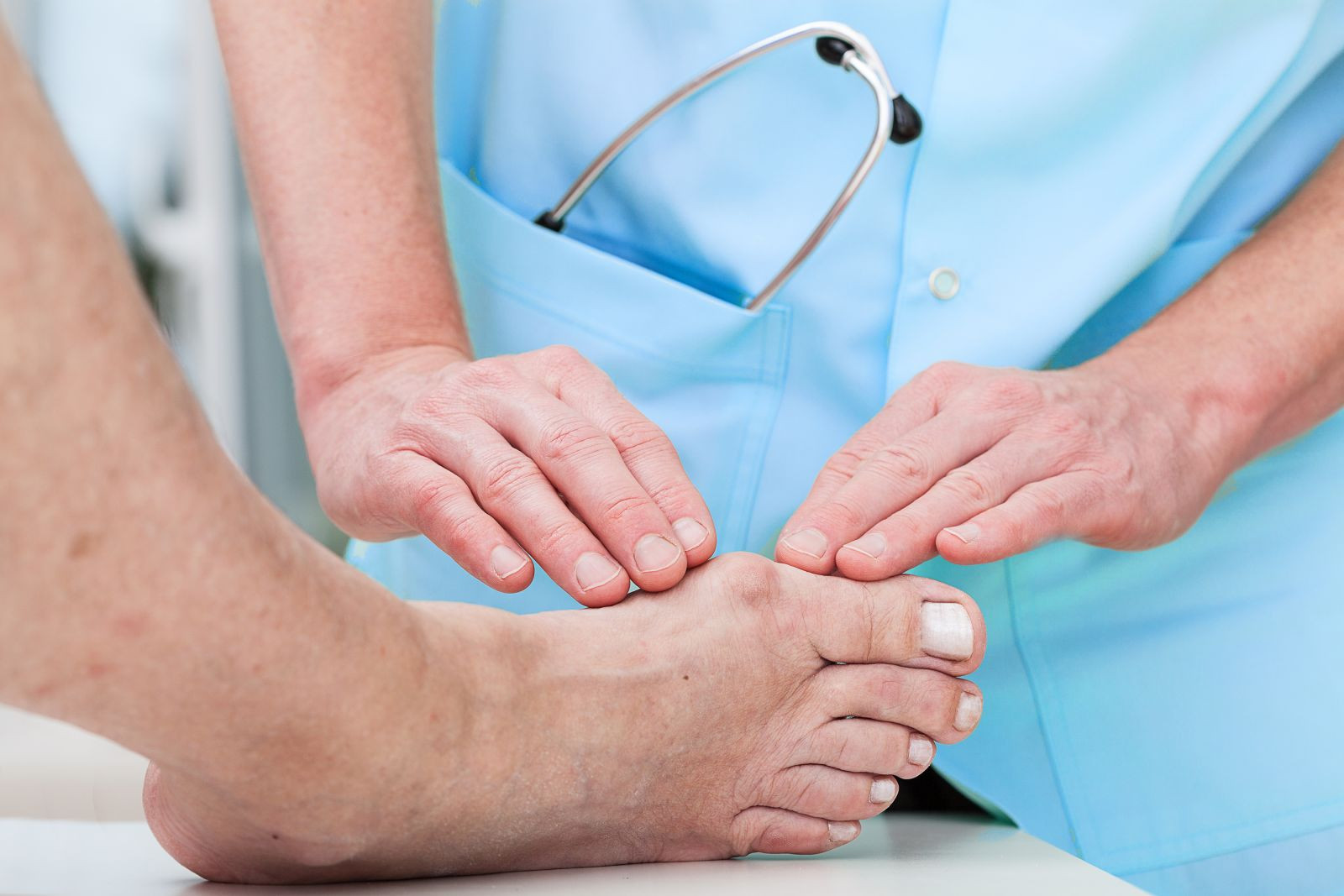Foot health often takes a backseat until discomfort or deformities start affecting daily life. Among the common issues that many Australians face are bunions and hammer toes, conditions that can cause pain, restrict mobility, and impact quality of life. At AHP Podiatry, we understand how these deformities affect individuals of all ages, especially those in aged care and independent living communities. Our personalised approach ensures treatments are tailored to your specific needs, whether through conservative care or surgical intervention.
In this article, we will explore what bunions and hammer toes are, what causes them, their symptoms, and the podiatry treatments available. We will also help you understand when surgery might be necessary, so you can make informed decisions about your foot health.
What Are Bunions and Hammer Toes?
A bunion is a bony bump that forms at the base of the big toe, causing the toe to lean inward toward the other toes. This misalignment often leads to swelling, redness, and discomfort around the joint. On the other hand, hammer toes are deformities where one or more of the smaller toes bend abnormally at the middle joint, resembling a hammer. This can cause pain, calluses, and difficulty wearing certain shoes.

Both conditions develop gradually, often linked to factors such as genetics, wearing ill-fitting footwear, ageing, or underlying issues like arthritis. For many, the pain starts as mild irritation but can progress to significant mobility problems if left unaddressed. Recognising symptoms early, like persistent foot pain, swelling, or changes in toe shape, is essential to seek timely care.
Conservative Podiatry Treatments
Most people with bunions or hammer toes can benefit from non-surgical podiatry treatments, especially when symptoms are mild to moderate. The main goal of these treatments is to relieve pain, prevent further deformity, and improve foot function.
For bunions, podiatry treatments for bunions usually begin with conservative options such as padding the affected area to reduce pressure and discomfort. Another key intervention is the use of orthotics for bunions. These are custom-designed shoe inserts that help correct foot alignment and redistribute weight away from the bunion. Orthotics can play a crucial role in managing symptoms and slowing the progression of the deformity.
Footwear assessments are equally important. Shoes with a wide toe box, low heels, and good support reduce pressure on both bunions and hammer toes. Patients are encouraged to avoid tight, narrow, or high-heeled shoes, which exacerbate foot deformities.
When it comes to hammer toe treatment, conservative care includes using splints or straps to realign the affected toes gently. Specific exercises prescribed by podiatrists can help strengthen the muscles around the toes, improving flexibility and reducing stiffness. Padding over pressure points also helps alleviate pain caused by corns or calluses formed due to abnormal toe positions.
At AHP Podiatry, we emphasise the importance of early intervention. Regular assessments allow us to monitor changes and adjust treatments accordingly. Our approach ensures that each client receives personalised advice and solutions suited to their lifestyle and needs.
It’s worth noting that effective podiatry treatments for bunions and hammer toes are supported by guidelines from trusted health sources. For instance, the Better Health Channel outlines how conservative care, including orthotics and appropriate footwear, plays a vital role in managing these foot conditions, reducing the need for surgery in many cases.
When Is Surgery Recommended?
While many cases respond well to non-surgical treatment, there are times when surgery becomes necessary. Surgery is generally considered when pain persists despite conservative care, when deformities worsen, or when foot function is significantly impaired.
Surgical procedures for bunions aim to correct the toe alignment, relieve pressure, and restore normal joint function. The specific technique used depends on the severity of the deformity and individual factors. For hammer toes, surgery may involve straightening or repositioning the affected toe joints to reduce pain and improve mobility.
At AHP Podiatry, we stress that surgery is not the first step but rather a carefully evaluated option for those whose quality of life is compromised. Before recommending surgery, we conduct thorough assessments and discuss all risks, benefits, and recovery expectations with clients.
Post-operative care is equally important. Our podiatrists provide ongoing support, including wound care, rehabilitation exercises, and guidance to prevent recurrence or complications. Surgery combined with proper aftercare can offer significant relief and functional improvement for many patients.
Why Choose AHP Podiatry for Bunions Treatment?
Choosing the right podiatry provider can make a significant difference in your treatment outcomes. AHP Podiatry specialises in comprehensive foot and lower limb care, serving aged care facilities, independent living communities, and individual patients across Australia.
Our strength lies in a personalised approach where treatment plans are tailored to each client’s unique requirements. We understand that foot health is closely linked to overall mobility and quality of life, especially for older adults. This perspective guides us to not just treat deformities but also support broader mobility goals.
Our podiatrists work closely with clients to provide education, conservative care options, and when necessary, surgical referrals with ongoing management. We also emphasise building long-term relationships for continuous foot health monitoring.
Bunions and hammer toes are common foot deformities that can cause significant discomfort and mobility issues. Fortunately, many patients find relief through bunions treatment and other conservative podiatry interventions such as orthotics and footwear advice. When these measures are insufficient, surgical options are available and tailored to individual needs.
If you are experiencing foot pain or notice changes in your toe shape, it’s important to seek professional advice early. The team at AHP Podiatry is here to provide personalised assessment and treatment to help you maintain mobility, reduce pain, and improve your quality of life.
Contact us today to discuss your foot health and discover the right treatment pathway for you.

